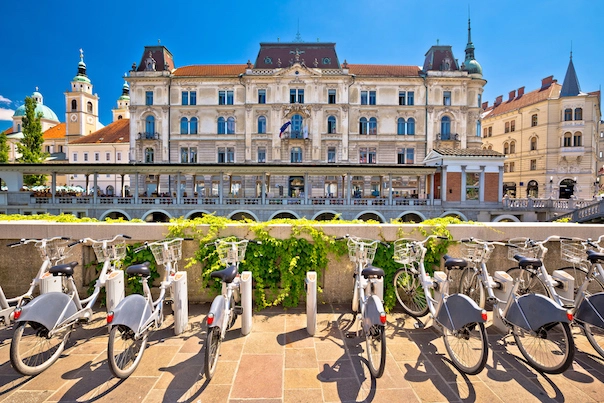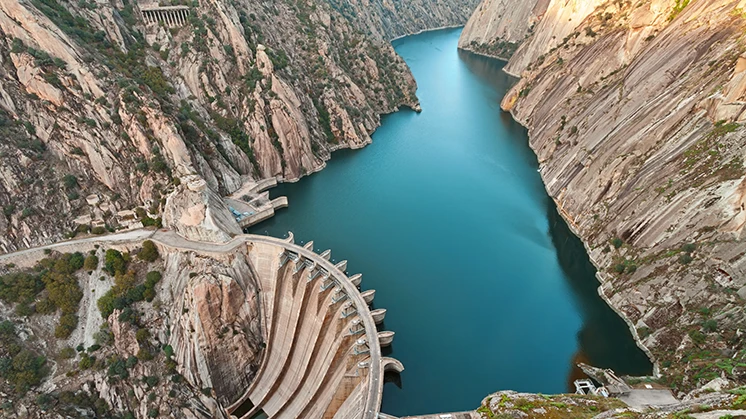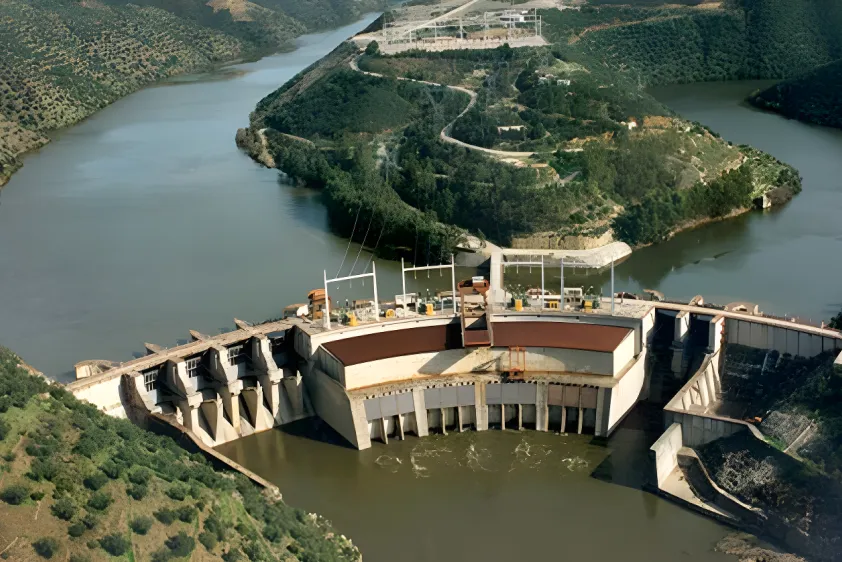SUSTAINABLE TOURISM IN SPAIN
All about sustainable tourism in Spain
As environmental awareness grows, an increasing number of travellers are choosing sustainable tourism experiences. In this context, environmentally friendly tourism and its positive impact on local communities has emerged as a key response to the environmental and social challenges linked to the rapid growth of the global tourism industry.

Sustainable tourism seeks to minimise the environmental, social and cultural impact of visitors on their surroundings
Unlike a traditional approach, which prioritises economic development at the expense of the environment and local communities, sustainable tourism aims to balance economic prosperity with environmental conservation and social wellbeing.
In 2024, 1.4 billion international trips were made, according to the UNWTO World Tourism Barometer. That year, Spain welcomed around 93.8 million tourists, according to the country’s National Statistics Institute. Booking.com reports that 74% of travellers want to travel more sustainably over the next 12 months. For 40% of Spanish tourists, accommodation with a recognised sustainability certification is a more attractive option. These certifications ensure that the accommodation adopts practices that reduce its environmental impact and promote social and economic sustainability, granted by organizations such as Green Key, EarthCheck, and ISO 14001.
In short, sustainable tourism has become the ideal combination of exploring the world while protecting it. Here we explain the main objectives of sustainable tourism and how Iberdrola España is addressing them.
What is sustainable tourism?
Sustainable tourism is a form of travel designed to minimise the environmental, social and cultural impact, with the aim of preserving resources and promoting the wellbeing of local communities.
It involves measures that reduce environmental footprints, foster local participation and respect traditions and cultural heritage. Ultimately, it is about ensuring harmony between visitors and their surroundings, generating long-term benefits for everyone involved.
The origins of sustainable tourism
The origin of the concept of sustainability date back to 1983, when the United Nations (UN) created the World Commission on Environment and Development. This was followed by a series of global initiatives on environmental issues, leading up to the Earth Summit held in Brazil in 1992. That event produced the Rio Declaration on Environment and Development and Agenda 21, where concepts such as sustainability, and environmental, social and economic development were explored, and the need for tourism sustainability plans was recognised for the first time.
These first steps were consolidated in 1995 with the World Conference on Sustainable Tourism in Lanzarote. There, the “Charter for Sustainable Tourism” was proposed, laying the foundations for applying sustainable principles to the tourism sector.
The objectives of sustainable tourism
In the early 2000s, the World Tourism Organization and the United Nations Environment Programme established 12 objectives that form the basis of sustainable tourism. These aim to ensure a balanced approach to the economic, environmental and socio-cultural aspects of tourism development to secure long-term sustainability.
- Economic viability: Ensure financial sustainability to encourage prosperity and long-term benefits.
- Local prosperity: Strengthen the contribution of tourism to the economic growth of host communities.
- Employment quality: Improve both the quality and quantity of jobs while ensuring fair and inclusive working conditions.
- Social equity: Guarantee a fair distribution of the wealth generated by tourism within host communities.
- Visitor fulfilment: Provide a safe and rewarding experience for all visitors without social distinctions.
- Local participation: Involve local residents in decision-making on tourism development and management.
- Community wellbeing: Provide the necessary resources and services without degrading natural or social environments.
- Cultural value: Respect and enhance heritage while preserving local culture and identity.
- Ecosystem integrity: Protect and improve rural and urban landscapes, safeguarding environmental quality.
- Biodiversity conservation: Preserve natural areas and minimise environmental impact.
- Resource efficiency: Reduce the use of scarce or non-renewable resources as much as possible.
- Environmental sustainability: Minimise pollution and waste to protect environmental quality.
Three keys to sustainable tourism in Spain
The World Tourism Organization (UNWTO), in its role as a driver of economic growth, inclusive development and environmental sustainability, has defined three priorities for advancing sustainable tourism in Spain:
- Optimising natural resources: Maintaining essential environmental processes and preserving natural resources and biodiversity as the foundation of tourism development.
- Respecting cultural authenticity: Safeguarding cultural and architectural heritage, protecting traditional values, encouraging mutual understanding and promoting intercultural tolerance.
- Ensuring long-term economic viability: Generating fair socio-economic benefits for all stakeholders, including stable jobs, income generation and social services for host communities.
Importance of sustainable tourism in Spain
Spain is a world leader in tourism, which is one of the country’s main economic pillars, both as a source of revenue and job creation. In 2024, Spain received more than 93.8 million tourists, according to the National Statistics Institute.
Growing environmental awareness and various initiatives in sustainable tourism could position Spain as a global benchmark, according to a recent McKinsey study. The report highlights Spain’s potential to become a preferred destination for environmentally conscious travellers.
To address new social, cultural and climate challenges, the Spanish government has launched the Spain Sustainable Tourism Strategy 2030, a national roadmap to strengthen the sector in the medium and long term. This programme seeks to promote the three pillars of sustainability: socio-economic, environmental and territorial.
Spain Sustainable Tourism Strategy 2030
The Spain Sustainable Tourism Strategy 2030 proposes a model of tourism growth based on:
Socio-economic development

Preservation of natural and cultural values
Social benefit
Participation and governance

Ongoing adaptation

Consolidating leadership
Further information is available on the Spanish government’s roadmap, which will guide the country’s sustainable tourism evolution over the next decade.
Iberdrola España and sustainable tourism
With renewable energy generation plants in various parts of the Iberian Peninsula, at Iberdrola España we ensure that all our facilities bring together the natural and cultural wealth of their surroundings with care for the environment. This creates a positive impact on local communities and contributes to the development of sustainable tourism in the Spanish regions where we operate.
The autonomous regions of Castilla y León and Extremadura are not only home to vast areas of unspoilt nature but also boast a rich historical heritage that can be seen in their cities and numerous towns. For this reason, they are two of the Spanish regions most committed to the development of sustainable tourism.
In both regions, Iberdrola España contributes to the promotion of this type of tourism through its activity and by operating landmark facilities that, thanks to their integration into the natural and urban landscape, have become destinations for many travellers.
Contribution to sustainable tourism in Extremadura
Extremadura is home to one of the most iconic and largest hydroelectric plants in Spain: the José María de Oriol hydroelectric power plant, also known as the Alcántara plant due to its proximity to the town of the same name and the reservoir of the same name on the River Tagus.
Commissioned in 1969, over the years this plant has not only contributed to the region’s socioeconomic development by generating renewable energy, but it has also become integrated into its surroundings and turned into a tourist attraction in its own right.
In addition, the Convent of San Benito de Alcántara – acquired by the Iberdrola Group in the 1960s to house the engineers working on the dam – is now home to the San Benito de Alcántara Foundation. This institution is dedicated to historical and cultural study and research, with a particular focus on tourism and social development in Extremadura.
Contribution to sustainable tourism in Castilla y León
In Castilla y León, specifically in the Arribes del Duero Natural Park (Salamanca), lies the Aldeadávila hydroelectric power plant. Commissioned in 1962, it is set in a canyon on the lower stretch of the River Duero as it passes through the Arribes del Duero Natural Park, on the border with Portugal.
The Aldeadávila hydroelectric plant provides clean energy and is also an ideal tourist destination
As well as being one of Spain’s great feats of hydraulic engineering, its distinctive design and setting among granite cliffs rising to 300 metres above the river have made it one of the area’s leading tourist attractions.
More content about the environment on Iberdrola España

Sustainable mobility

The Albufeira Convention

Iberdrola and the reservoirs in Spain

Electric vehicle fair





